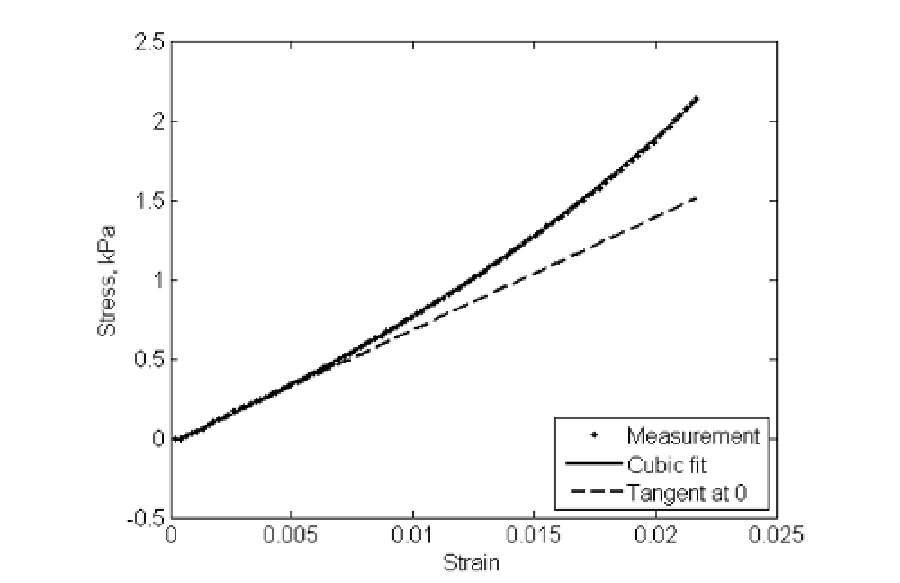Biomedical Engineering Reference
In-Depth Information
Fig. 12. Stress-strain curve of a core sample from compression test.
2.2.2.2 Numerical modal analysis with finite element modeling (FEM)
The application of stresses and strains in biological materials not only has a component
associated to consumer evaluation but also it is related to quality control. Many of the
stresses and strains are applied locally either during processing or consumption of the fruits.
But they are distributed over the entire surface, thus it is necessary to use methods that can
estimate the distribution of stresses over the product. Finite Element Modeling (FEM) is a
well developed and proven mathematical and simulation tool to apply to the study of
quality of fruits during consumption, storage and processing.
Cherng (2000) stated that the lowest natural frequency for hollow fruit like melons
corresponded to the elongation along the major axis. Cooke (1972) concluded that the most
important mode was the first twisting mode because it corresponds to the shear modulus of
the flesh, which in turn corresponds to the fruit ripeness. Finite element models published in
Cherng (2000) did not model the rind separately but assumed that the rind has the same
properties as the flesh. Nourain et al (2004) compared a finite element model to
experimental modal analysis results.
As an illustration, a finite element mesh used for a melon fruit is shown in Figure 13, with
an octant removed to show the inside. The idealized melon-like geometry is a prolate
ellipsoid with the major axis in the vertical direction. The major radius of the flesh is
77.5mm. The minor radius is 75mm. The hollow radii are 52.5mm (major) and 50mm
(minor). The rind thickness is 2.5mm. For simulation purposes assumptions for the rind
Young's modulus was 4.0 MPa whereas values used for the flesh Young's modulus were
1.0MPa, 1.5MPa, 2MPa, and 3MPa. The modal frequencies will be given in the order
corresponding to those Young's moduli. The Young's moduli selected above are somewhat
arbitrary and do not represent the values shown in Figure 12 from the test applied to a

